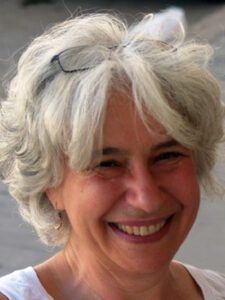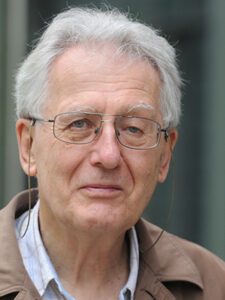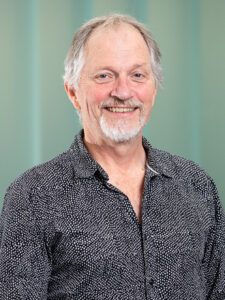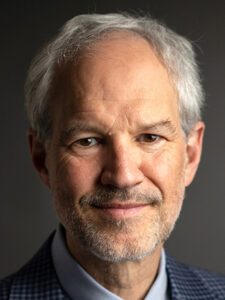Session 4: Generation of Immunological Memory
Chairs: Rudi Manz, Anja Hauser
17:50 – 18:15 Ann Rothstein
18:15 – 18:40 Klaus Rajewsky
18:40 – 19:05 David Tarlinton
19:05 – 19:30 Mark Shlomchik
 Ann Rothstein
Ann Rothstein
UMass Chan Medical School, Worcester, Massachusetts, USA
To STING or not STING, TLRs are the question
Monogenic disorders leading to autoinflammatory diseases frequently results from the aberrant accumulation or processing of DNA or RNA. Patients with these disorders can present with a combination of distinct and overlapping symptoms, and often fail to respond to common immunosuppressive therapies despite identification of many of the precipitating mutations. It is therefore important to better understand how nucleic acid sensing receptors promote these conditions and in particular the tissue-specific pathologies. Importantly, we have found that a given mutation may work through multiple receptors, depending on cell type. This will be illustrated in a murine model of DNaseII deficiency that recapitulates many of the features of patients with hypomorphic mutations in DNaseII.
Biosketch
Dr. Marshak-Rothstein obtained her PhD degree from the University of Pennsylvania and the completed her post training at MIT. She then started her own lab at Boston University School of Medicine and then moved to UMass Chan in 2009. Her main research interests have focused on the role of nucleic acid sensing receptors in models of autoimmunity and inflammation, including the role of endosomal TLRs in SLE and more recently the activity of both cytosolic and endosomal DNA receptors in monogenic autoinflammation. Her contributions have been recognized by the Distinguished Innovator Award from the Lupus Research Alliance, the Lupus Insight Prize from the Alliance for Lupus Research and as a Distinguished Fellow in AAI.

Klaus Rajewsky
Max-Delbrück-Center for Molecular Medicine in the Helmholtz Association, Berlin, Germany
Evolutionary and somatic B cell memory
The pre-immune antibody repertoire of mice is expressed in two separate subsets of B lymphocytes. In B1 cells, which appear first in ontogeny, development is driven by the selection of cells that clonally express a restricted set of germ line-encoded, autoreactive antibodies as their antigen receptors (BCRs). The “natural” antibodies produced by these cells cross react with determinants of common pathogens and are thought to represent a first line of immune defense, based on evolutionary experience. In contrast, B2 cells are generated through a process of sequential antibody V region gene rearrangements to express a broad range of non-autoreactive BCR specificities. These cells are driven by antigens and T cell help into adaptive antibody responses. In the course of these responses the cells diversify their BCRs through somatic hypermutation, generating a compartment of memory B cells and long-lived plasma cells, whose BCR repertoire is shaped by somatic antigen exposure.
We have obtained evidence that autoreactivity indeed drives B1 cell development. In addition, an attempt will be presented to determine to which extent somatic memory in the B2 compartment reflects affinity maturation for the immunizing antigen versus the generation of “anticipatory” BCR specificities.
Biosketch
Klaus Rajewsky and collaborators developed a general method of targeted mutagenesis in mouse embryonic stem cells by introducing bacteriophage- and yeast-derived recombination systems, opening the way to conditional gene targeting. Using this and other methods in their immunological work, they developed, together with N. A. Mitchison and N. K. Jerne, the antigen-bridge model of T-B cell cooperation, identified germinal centers as the sites of antibody somatic hypermutation, the B cell antigen receptor as a survival determinant of B cells, and the germinal center as a major site of human B cell lymphomagenesis, including Hodgkin lymphoma. Over the last years the work of his group has focused on mechanisms of microRNA control, targeted mutagenesis and gene repair in hematopoietic cells including mouse and human hematopoietic stem and progenitor cells, differentiation and subset determination in B lymphocytes, and the development of mouse models of human B and T cell pathologies.
Klaus Rajewsky obtained his medical degree at the University of Frankfurt. After postdoctoral work at the Institut Pasteur in Paris he built, from 1964, an immunology department at the Institute for Genetics, University of Cologne, where he stayed for 38 years, was the founding Program Coordinator of the EMBL Mouse Biology Program at Monterotondo near Rome from 1996-2001, worked for 10 years at Harvard Medical School in Boston from 2001, and is since 2012 Senior Group Leader at the Max-Delbrück-Center for Molecular Medicine in Berlin, Germany. He won numerous scientific awards and is a member of several learned societies including the National Academy of Sciences of the USA and the American Academy of Arts and Sciences. Many trainees from his laboratory have embarked on distinguished careers in academia and industry all over the world.
 David Tarlinton
David Tarlinton
Monash University, Melbourne, Australien
Plasma Cell Memory – a question of who survives and for how long.
The persistence of antibody production long after removal of the triggering antigen and cessation of the immune response, is a key component of immunity and underpins the efficacy of many vaccines. But the processes by which the plasma cells that secrete protective antibodies are sustained and why the extent of survival differs in different circumstances and potentially at different times of life remain largely unknown. By using genetically engineered mice that permit the indelible labelling of all plasma cells present at a given time, it has become possible to track plasma cells by lifespan in addition to specificity, location and isotype. Doing so has provided insights into the basis of longevity, the kinetics of turnover, the stratification of the population on the basis of lifespan and some of the molecular drivers of the differences that could answer the question of which plasma cells survive and why.
Biosketch
David is a BSc from the University of Sydney and PhD from Stanford University, supervised by Len and Lee Herzenberg. He was by post-doctoral fellow with Klaus Rajewsky in Cologne and Gus Nossal at the Walter and Eliza Hall Institute (WEHI) in Melbourne, Australia. David was a Laboratory Head at WEHI and Research Fellow of the National Health and Medical Research Council (NHMRC) from 1997-2015. In 2016 he was appointed Professor and Head of Department of Immunology at Monash University, located at the Alfred Hospital, positions he continues to hold.
David has been President (2011-2012) of the Australian and New Zealand Society for Immunology (ASI), recipient of the Lupus Research Institute (USA) Distinguished Innovator Award (2013), of the Australian Museum Eureka Prize for Scientific Research (2014), the ASI Jacques Miller Senior Travel Award (2014) and is a Life Member of Clare Hall, Cambridge (2015). He has published over 190 research papers, reviews and commentaries, supervised a reasonable number of PhD students and research fellows, and spends too much time reviewing the work of other people.
He has focused on the development and differentiation of lymphocytes, particularly B cells during immune responses and autoimmune diseases throughout his career. He has published on the formation and persistence of immune memory and on the mechanisms of cell differentiation and survival during and after immune challenges, results that have implications for vaccination, autoimmune diseases and cancers of immune cells.
 Mark Shlomchik
Mark Shlomchik
University of Pittsburgh, Pennsylvania, USA
Heterogeneity, Ontogeny and Functions of Memory B cells
Mark Shlomchik, MD, PhD and Derrick Callahan, PhD
Memory B cells (MBCs) are phenotypically and functionally diverse, but their developmental origins are not always clear. Murine MBCs can be divided into subsets by expression of CD80 and PDL2. Upon re-immunization, CD80/PDL2 double-negative (DN) MBCs spawn germinal center B cells (GCBCs) whereas CD80/PDL2 positive (DP) MBCs generate plasmablasts but not GCBCs. Using multiple approaches, including a novel GCBC-specific, inducible Cre allele, I will discuss that in a T-dependent response DNs form independently of the GC, whereas DPs exhibit either extrafollicular (DPEX) or GCBC (DPGC) origins. I will present data that indicate that MBC functional diversity is generated through distinct developmental histories, which imprint characteristic epigenetic patterns onto their progeny, thereby programming them for divergent functional responses.
Biosketch
Dr. Shlomchik received his medical and doctoral degrees in 1989 from the University of Pennsylvania. In 1993 he joined the faculty at Yale University, becoming a full professor in 2004. In July 2013 he moved to the University of Pittsburgh School of Medicine where he was Department Chair for 9 years and where he is currently Distinguished Professor and UPMC Endowed Chair for Immunology. Dr. Shlomchik won the inaugural Lupus Insight Prize and has delivered the Willison Lecture (University of Michigan), the Joy Faith Knapp Lecture (University of Chicago), the Albert Hasinger Lecture (Berlin, Germany), the American Association of Immunology Distinguished Lecture, and the Charles A. Janeway Memorial Lecture (Yale). He is also the recipient of an NIH MERIT award. He has authored more than 220 original articles and chapters.
Dr. Shlomchik’s lab is interested in long-lived B cell immunity and origins and the immunopathogenesis of systemic autoimmune diseases. He has elucidated the key roles of B cells, Toll-like receptors, and dendritic cells in these diseases; a current focus is understanding the role of T cells, and inherent tissue resistance to them, in systemic autoimmunity. In the area of long-lived B cell immunity and has helped elucidate the function of memory B cells and the germinal center, along with control of extrafollicular responses. In 2017 he co-founded BlueSphere Bio, which aims to deliver personalized T cell immunotherapy for leukemia and solid tumors, based on the patented TCXpress TCR cloning and functionality testing platform he invented.
